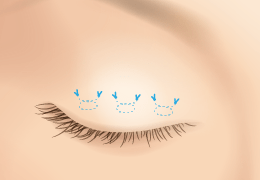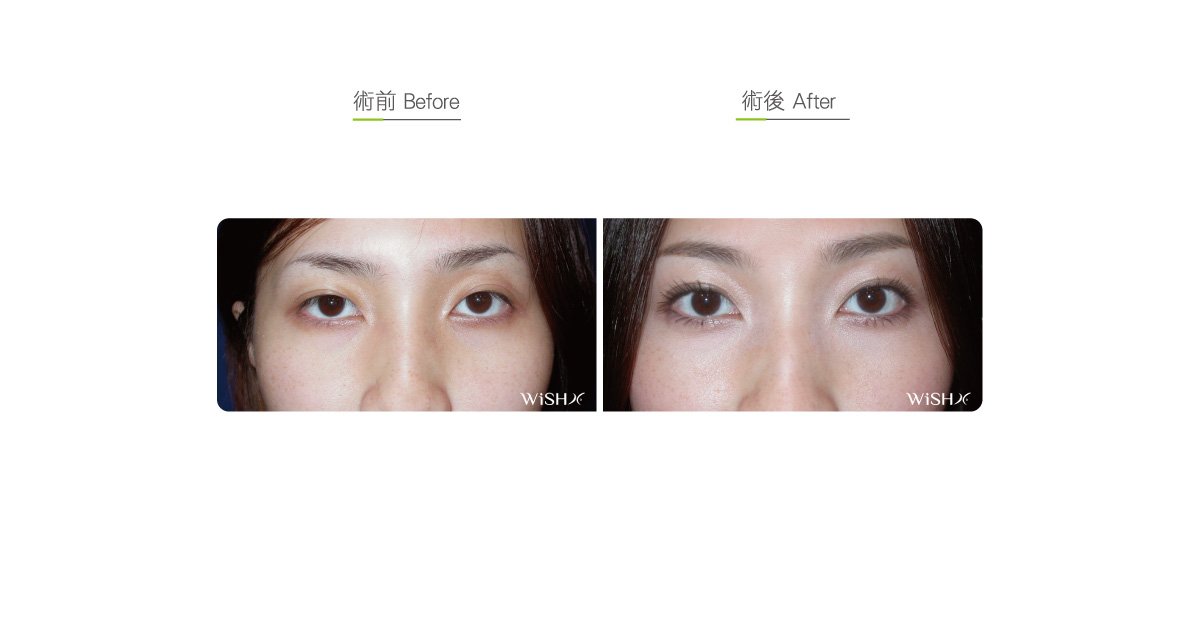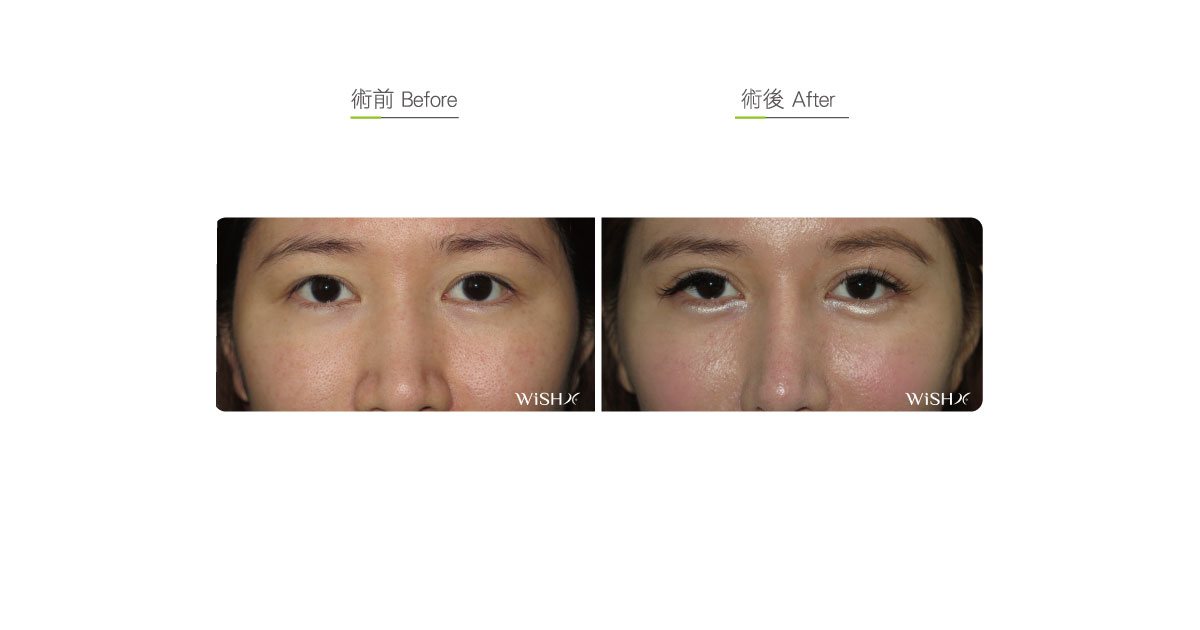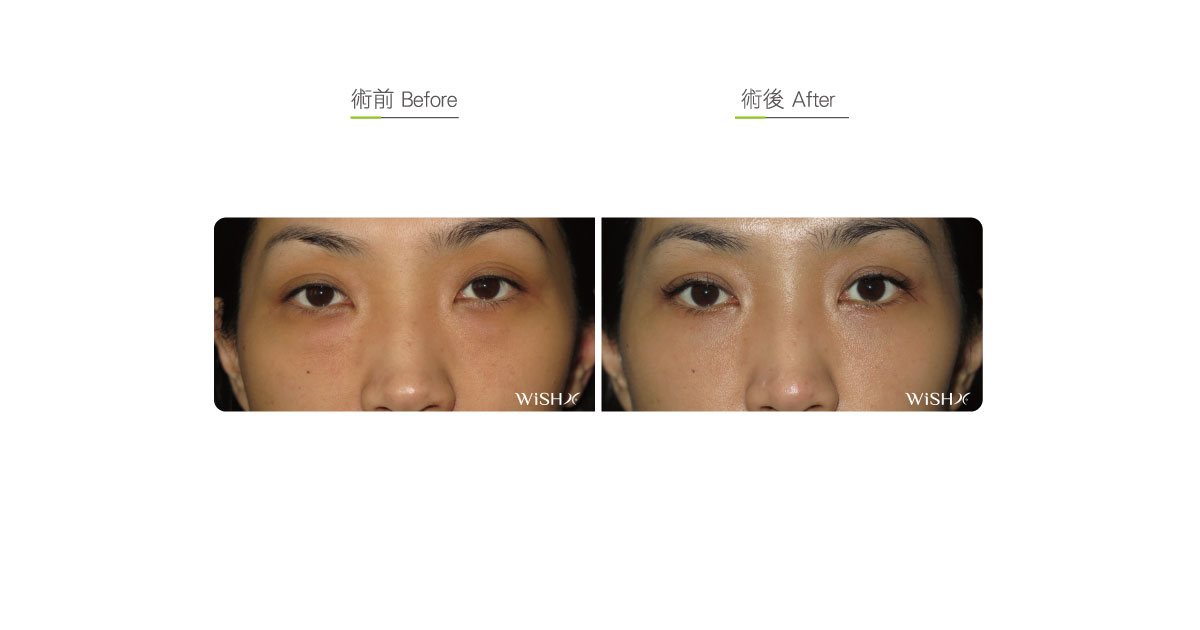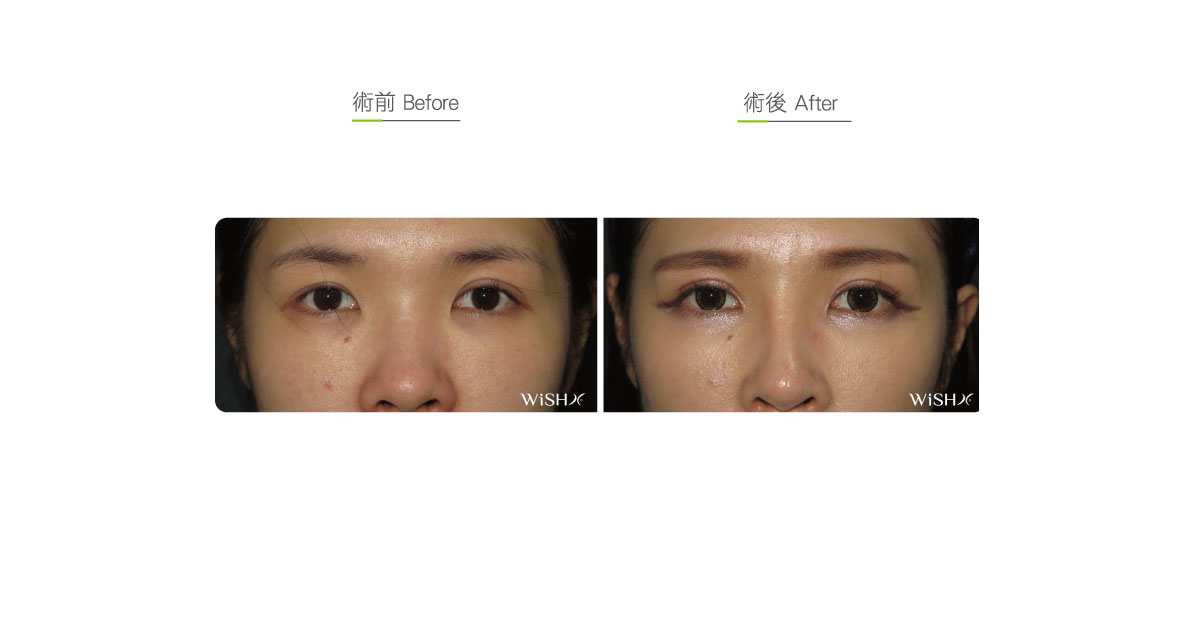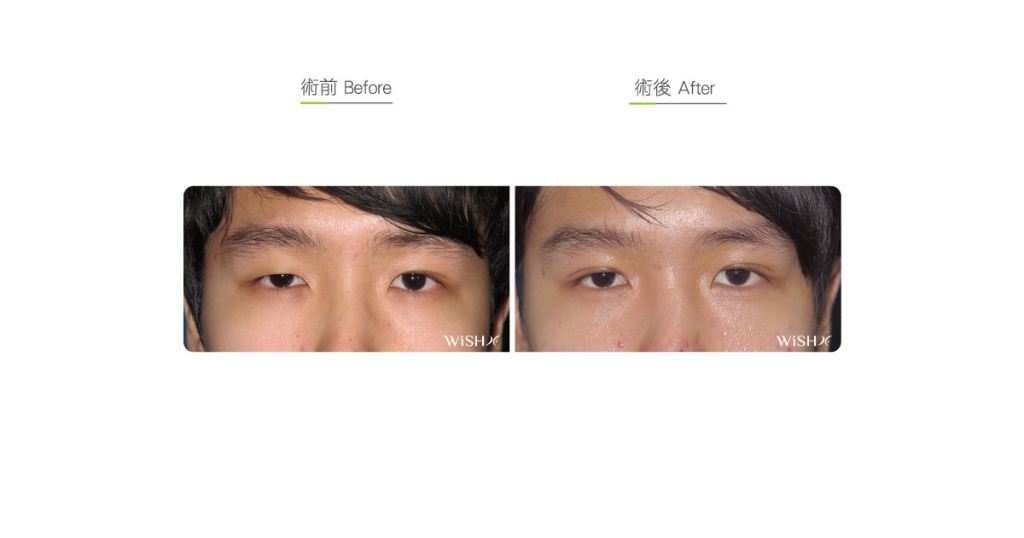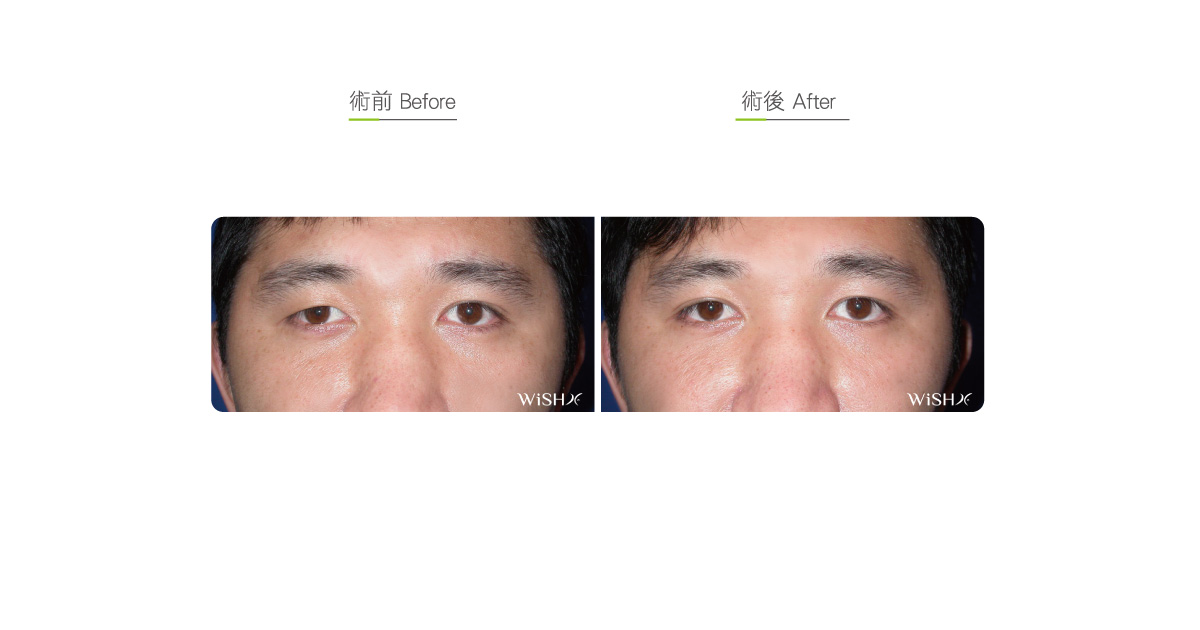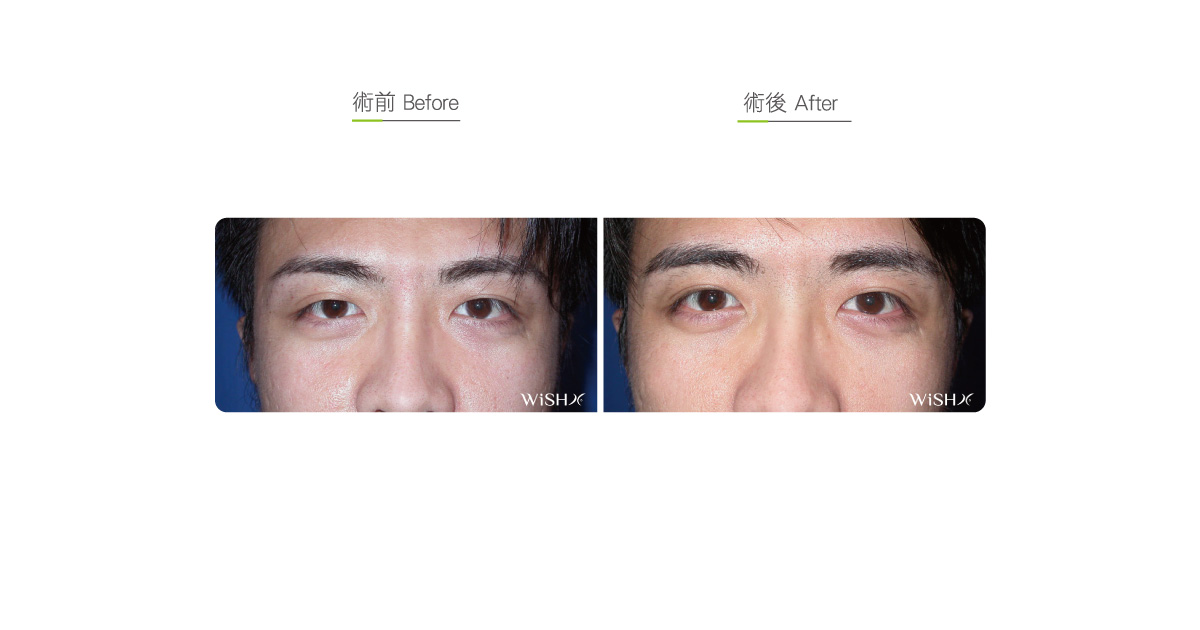Stitching Double Eyelid Surgery (Suture Technique)
This surgery is also called scarless double eyelid stitching, which is the most fundamental double eyelid surgery and is applicable to an overwhelming majority of young patients with monolids. It is mainly aimed to create a double eyelid fold to replace non-surgical manipulations such as double eyelid tape or glue. It is conducted by transfixion repeated stitching of the anterior eyelid skin and posterior tarsal plate with No.7 suture specific for blepharoplasty (cross-over suturing), which promotes eyelid adhesion to inferior tissues via suture pressure to create acquired folds, and then embedding the suture below the skin to fixate the double eyelids. Therefore, only needle holes are created at the eyelid during the operation, and there is no need for the removal of stitches after surgery. This has both a rapid recovery rate and no scar, which also constitute its biggest advantage. Nevertheless, the embedded suture knots are located at the superficial layer of the eyelid, which prematurely become loose sometimes due to eyelid rubbing, ocular pressure, or excess use, so the durability of surgical results differs among individuals and the long-term effects cannot be guaranteed. Moreover, because this surgery does not make incisions on the eyelid, orbital fat removal or levator muscle correction for asymmetrical eyes cannot be performed, thus confining the applications of this method. In WiSH clinic, Dr. Chuang utilizes the latest staple fixation method for double eyelid stitching, whose durability is remarkably improved compared with that of the traditional stitching method.
Though simple, economic, and convenient, Dr. Chuang warns that stitching double eyelid surgery is not suitable for patients with the following conditions:
- Those with congenital eyebrow compression to the eye or an exceedingly thick eyelid
- Those whose eyelids have already shown obvious laxity or sagging
- Those with congenitally unequal eyes or probable levator palpebrae muscle weakness (ptosis)
- Those with acute or chronic eyeball diseases who are unable to tolerate the stimulus of eyelid sutures
- Those with severe myopia, an exceedingly high intraocular pressure, or who may frequently rub their eyes due to an allergy
- Those who received have undergone ophthalmic surgeries or myopia surgical correction in the past 6 months
Surgical conditions
Duration
- Type of anesthesia: IV sedation + local anesthesia
- Surgical incision: No
- Recovery: 5–7 days
- Removal of stitches: No
General instructions
Fast from food and water on the day of operation
- Avoid wearing contact lens for 1 week postoperatively.
- Avoid smoking, alcohol, and irritating foods for 1 month postoperatively, and apply a warm pack for the eyelid swelling to subside.
Ideal candidates
- Patients with thin eyelids and without skin laxity or ocular vesicle fat
- Those with congenital double eyelids (such as hidden double eyelids) who desire for distinct eyelid folds
- Those who desire extremely natural double eyelids
- Those unable to accept incisional eyelid scars
- Those with congenital asymmetrical eyelids who only desire unilateral correction
- Those who want to correct the asymmetrical problem left by the prior double eyelid surgery
Potential complications
- Eyelid asymmetry
- Premature eyelid fold loosening
- Unequal eyes
- Ptosis
Surgical advantages
-
No scar is left.
-
The swelling rapidly subsides after the operation (approximately 1 week).
-
The surgical results are as natural as congenital double eyelids.
-
It is highly reversible if necessary
Surgical drawbacks
-
The surgical results may not last long.
-
Premature double eyelid loosening may occasionally occur.
-
It is unable to completely correct levator palpebrae muscle weakness or unequal eyes due to ptosis.
-
It is unable to remove orbital fats to correct the puffy eyelid puffy problem.
-
The surgical results may be too natural since, so it is unable to sculpt profound double eyelids.
Possible procedures in conjunction
Comparison between stitching double eyelid surgery and mini-invasive double eyelid surgery
| Stitching double eyelid surgery (sewing technique) | Mini-invasive double eyelid surgery (half-incision/triple micro-incisions | |
|---|---|---|
| Ideal candidates | Young and thin skin patients | Young patients or those with thick skin or mild ptosis |
| Desired results | Simply sculpting the double eyelid folds | Sculpting profound double eyelids or achieving the effect of eye enlargement or improving the thick and puffy eyes |
| Incision length | Multiple needle holes | Within 1–1.5 cm |
| Stitch removal | No | One week |
| Postoperative recovery | Fast (5–7 days) | Relatively slow (within 1 month) |
| Effect manifestation | Natural | Enlarged or profound eyes |
| Surgical scar | No | Probable |
| Premature loosening | Probable | No |
| Durability | Relatively short | Relatively long or permanent |
| Reversibility | Yes | Difficult |
| Concurrent medial canthoplasty | No | Yes |
| Levator muscle correction | No | Yes |
| Orbital fat removal | No | Yes |

